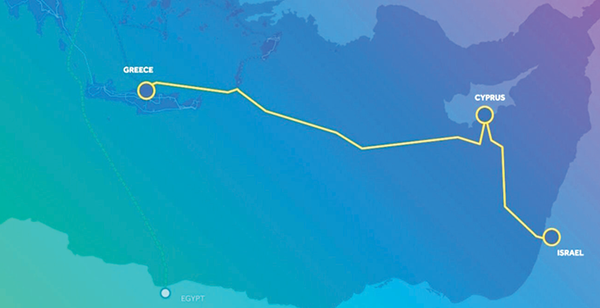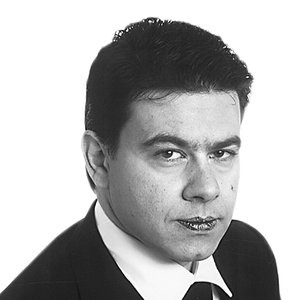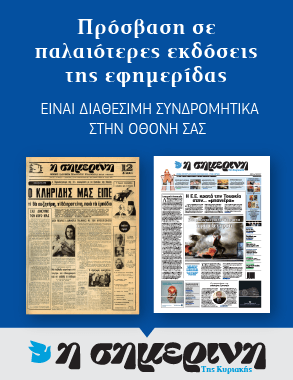A New Annexation Step of the Occupied Territories into Turkey
While the Greece–Cyprus–Israel cable is on hold, Erdoğan makes his move...
Turkey is pressing ahead with efforts to annex the occupied northern part of Cyprus by integrating it into its national power grid, even connecting it with the Akkuyu nuclear plant, while Athens and Nicosia respond with a policy of appeasement.
As attention shifts to the upcoming United Nations session in New York this September following the latest five-party talks, Turkey is advancing yet another measure to tighten its grip on northern Cyprus. On July 20th, the anniversary of the 1974 invasion, President Erdoğan announced the launch of an undersea electricity cable linking Turkey with the occupied territories. The 70–80 km cable marks the latest in a long list of efforts: after water pipelines, telecom infrastructure, banking integration, settlement activity, and military presence.
These initiatives are part of a broader annexation strategy, with Erdoğan’s moves seemingly timed to bolster the image of the Turkish Cypriot leader ahead of the October “presidential elections” in the north. Not that Ankara is particularly concerned about who wins—it controls the situation regardless.
Lower Prices, Greater Dependence
The planned HVDC cable, capable of transferring 300 MW with minimal loss, will run from Mersin (Silifke region) to the Teknecik power station near Kyrenia. Two converter substations will be built at each end. Officially, the project is framed as environmentally friendly, promising to cut carbon emissions by up to 48% by replacing oil-fueled generators. It is also expected to lower electricity costs in the occupied areas.
However, the real implication is deeper dependence on Turkey and detachment from the Republic of Cyprus. If Cyprus faces future energy shortages, the occupying authorities might even present themselves as saviors by offering power.
Project Timeline & Planning
The cable is promoted as reinforcing the “statehood” of the unrecognized Turkish Cypriot entity through a series of legally dubious steps:
- 2016–2017: Preliminary studies and the signing of a technical cooperation protocol.
- 2023: A formal (yet illegal) implementation protocol is signed.
- 2024–2025: Expected start of construction.
- 2028: Targeted completion and activation.
The agreement includes integrating the cable into Turkey’s national energy strategy and connecting the occupied areas to Turkey’s nuclear energy sources, notably the Akkuyu plant.
A Violation of International Law
Like the earlier water pipeline from Turkey to the occupied north, this cable project breaches both general international law and the Law of the Sea. The Republic of Cyprus could and should raise this issue before the UN, the EU, and international courts.
Relevant legal references include:
- The 1971 Namibia ICJ ruling
- Article 2(4) of the UN Charter
- Hague Regulations (Article 43)
- UN Security Council Resolutions 541 and 550
- UNCLOS Articles 58 and 79
The Namibia case sets a precedent: no state should recognize or support any illegal or unrecognized regime. Such support, technical or legal, reinforces unlawful occupation, as in the case of the Turkish-controlled north.
Strategic Intentions
Turkey’s actions clearly aim to entrench its control. Article 43 of the Hague Regulations states that an occupying power must respect the existing legal framework of the occupied territory. Turkey has done the opposite, installing a puppet regime and ignoring Cypriot and international law.
Even rulings from the European Court of Human Rights confirm Turkey’s responsibility for violations in the north, as shown in cases like the Fourth Interstate Application and the Loizidou decision. The cable is being laid in occupied land without the consent of the legitimate government, violating both sovereignty and international maritime law.
The underlying goal is to further normalize the illegal status quo and eventually push for international recognition of the Turkish-controlled north as a separate entity, just weeks after the New York five-party meeting.
Cyprus’ Options & Sanctions
The Republic of Cyprus can:
- Request a new UN resolution condemning the cable as a tool of annexation.
- Seek an advisory opinion from the International Court of Justice through the UN General Assembly.
- File a human rights case at the European Court of Human Rights for impacted citizens.
- Push for EU sanctions if the project proceeds.
These sanctions could be based on Articles 21 and 29 of the EU Treaty, which prioritize international law, human rights, and peace. Turkey, despite its EU candidate status, violates all of these principles, including the refusal to recognize Cyprus as outlined in the 2005 EU declaration.
The TURCYOS Cables
Telecoms in the occupied territories rely on two undersea fiber optic cables—Turcyos-1 and Turcyos-2, provided by Türk Telekom. Turcyos-1 (110 km, launched in 1991) and Turcyos-2 (213 km, launched in 2011 with 800 Gbps capacity) support increased data traffic and faster next-gen internet access.

Power Infrastructure
There are two main power stations and a small substation in the north:
- Teknecik (Agios Epiktitos): ~120–130 MW
- Gastria: ~153–188 MW
- Dikomo (small): ~20 MW

The cable that would have connected Greece with Cyprus and Israel, now frozen under Turkish threats



